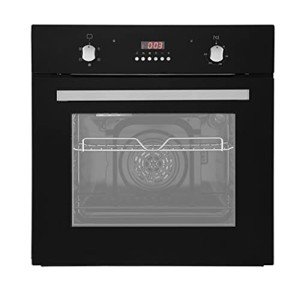14 Smart Ways To Spend Your Leftover Oven Built In Budget

The Rise of Built-In Ovens: A Seamless Approach to Modern Cooking
In contemporary kitchens, where design aesthetics mix flawlessly with functionality, one appliance sticks out as a true game changer: the built-in oven. As homeowners and chefs alike continue to seek innovative services that enhance their cooking experience, built-in ovens have become increasingly popular. This short article checks out the advantages, factors to consider, and trends surrounding built-in ovens, highlighting why they are a vital feature in modern-day cooking areas.
What is fitted ovens Ovens And Hobs -In Oven?
A built-in oven is a cooking area home appliance developed to be integrated into the kitchen cabinetry of a kitchen instead of standing alone. Unlike standard freestanding ovens, which can be moved and placed anywhere, built-in ovens come in various designs and sizes to fit particularly within designated spaces. Available in single or double configurations, these ovens provide a streamlined look that complements contemporary kitchen designs.
Benefits of Built-In Ovens
1. Space-Saving Design
Among the most enticing advantages of built-in ovens is their space-saving style. By incorporating the oven into cabinets, you can release up important counter and floor area. This is especially beneficial in smaller kitchen areas, where optimizing space is necessary. Built-in ovens can be installed at eye level, making them more available and lowering the need to bend down.
2. Aesthetic Appeal
Built-in ovens contribute to a streamlined and cohesive cooking area design. Available in different finishes-- such as stainless-steel, black, white, and custom cabinets-- they can blend perfectly into the overall design. This aesthetic appeal improves the cooking area's visual harmony and raises the area, creating a contemporary and sophisticated atmosphere.

3. Boosted Functionality
Numerous built-in ovens come geared up with advanced cooking technologies, such as convection cooking, steam ovens, and smart features. These improvements enable versatile cooking alternatives, making it easier to achieve professional-level outcomes at home. Smart built-in ovens can even link to Wi-Fi, making it possible for users to manage the oven remotely, receive alerts, and gain access to a variety of cooking programs and recipes.
4. Improved Ventilation
Due to the fact that built-in ovens can be integrated with kitchen hoods and ventilation systems, they can help maintain much better air quality and minimize cooking odors. This is specifically substantial for those who like to cook with aromatic spices and active ingredients, as a reliable ventilation system can keep the cooking area comfortable and welcoming.
5. Customization Options
Built-in ovens use a large range of customization options to fit individual cooking designs and needs. From professional-grade devices with multiple cooking modes to compact designs for smaller sized cooking areas, property owners can choose the oven that fits their particular requirements. Lots of manufacturers likewise provide adjustable front panels, permitting you to match the oven's look to your cabinets for a really combined look.
Factors to consider When Choosing a Built-In Oven
While built-in ovens have many advantages, there are necessary factors to consider to bear in mind before making a purchase:
1. Rate
Built-in ovens normally come with a higher price than their freestanding counterparts due to their design and setup requirements. It's important to consider both the expense of the oven and any extra expenses related to cabinets adjustments or installation.
2. Installation Requirements
Setting up a built-in oven often needs professional assistance, specifically if you need to customize existing cabinetry. Make sure that you think about any costs connected with installation, including labor and potential cabinetry modifications.
3. Size and Dimensions
Before purchasing a built-in oven, measure the designated area precisely to ensure a proper fit. Built-in ovens come in numerous sizes and setups, so selecting one that aligns with your needs and cooking area design is vital.
4. Lifestyle and Usage
Consider your cooking practices and needs when selecting a built-in oven. If you frequently host large events, a double oven might be more useful. On the other hand, if you have a compact cooking area, a single-wall oven might be adequate.
Patterns in Built-In Ovens
The kitchen appliance market is constantly developing, and built-in ovens are not exempt from emerging patterns. Some present trends consist of:
Smart Technology Integration: With the increase of wise home technology, built-in ovens now often include connectivity alternatives. This enables users to keep an eye on cooking development and change settings by means of mobile apps.
Energy Efficiency: As sustainability becomes a priority, many makers are investing in energy-efficient built-in ovens that reduce energy consumption while maintaining performance.
Multi-functional Designs: Built-in ovens now use features such as air frying, slow cooking, and steaming, supplying adaptability that fulfills a large range of cooking techniques.
Conclusion
Built-in ovens certainly represent an ideal mix of design, function, and benefit in today's cooking areas. As more homeowners choose this modern solution, the focus shifts to creating a cooking area that is as aesthetically pleasing as it is practical. Whether you are developing a brand-new home or renovating your cooking area, thinking about a built-in oven might elevate your cooking experience and transform your cooking area into an elegant and practical haven. With a range of alternatives readily available and ongoing innovations in technology, built-in ovens stay a standout option for both amateur cooks and culinary enthusiasts alike.
